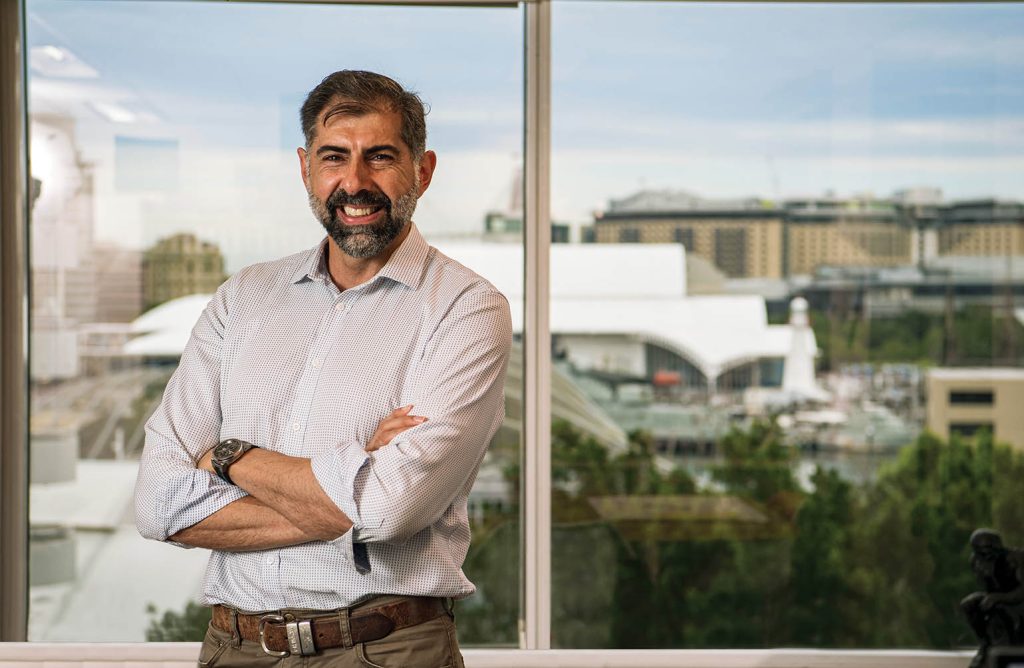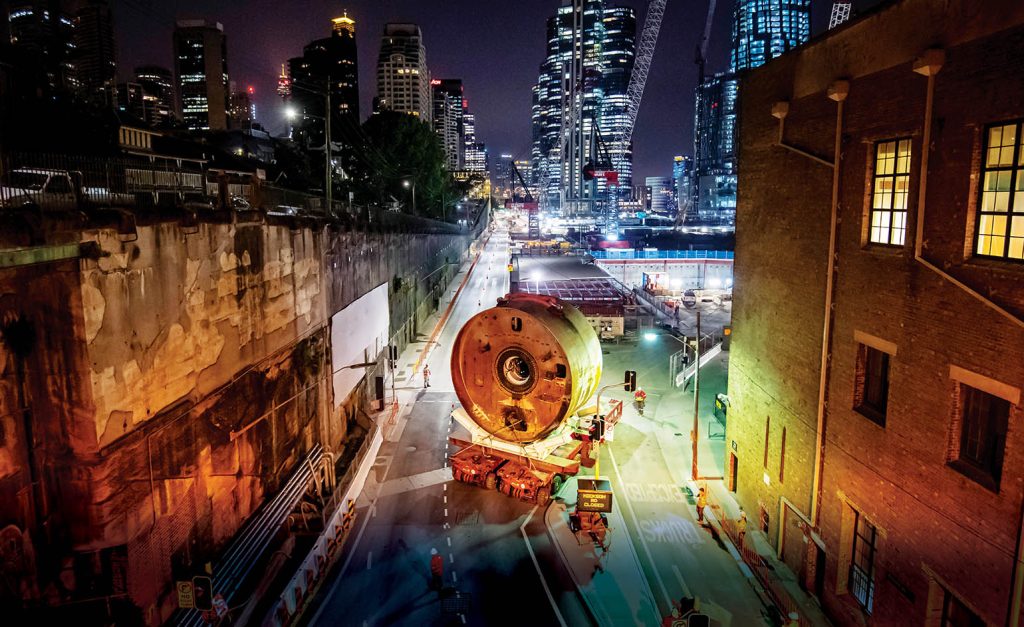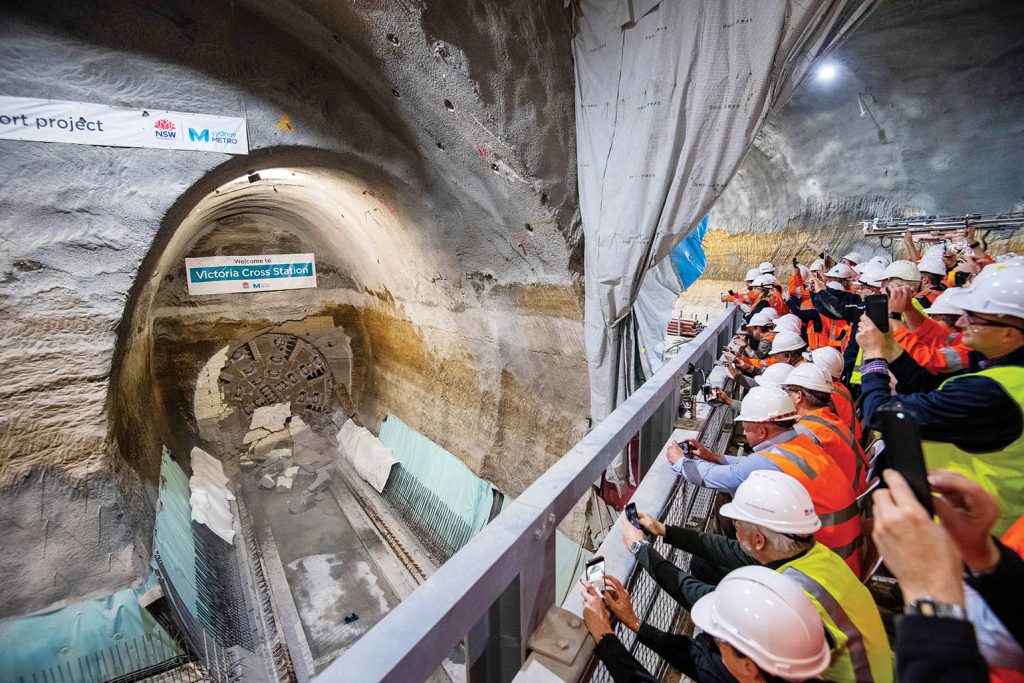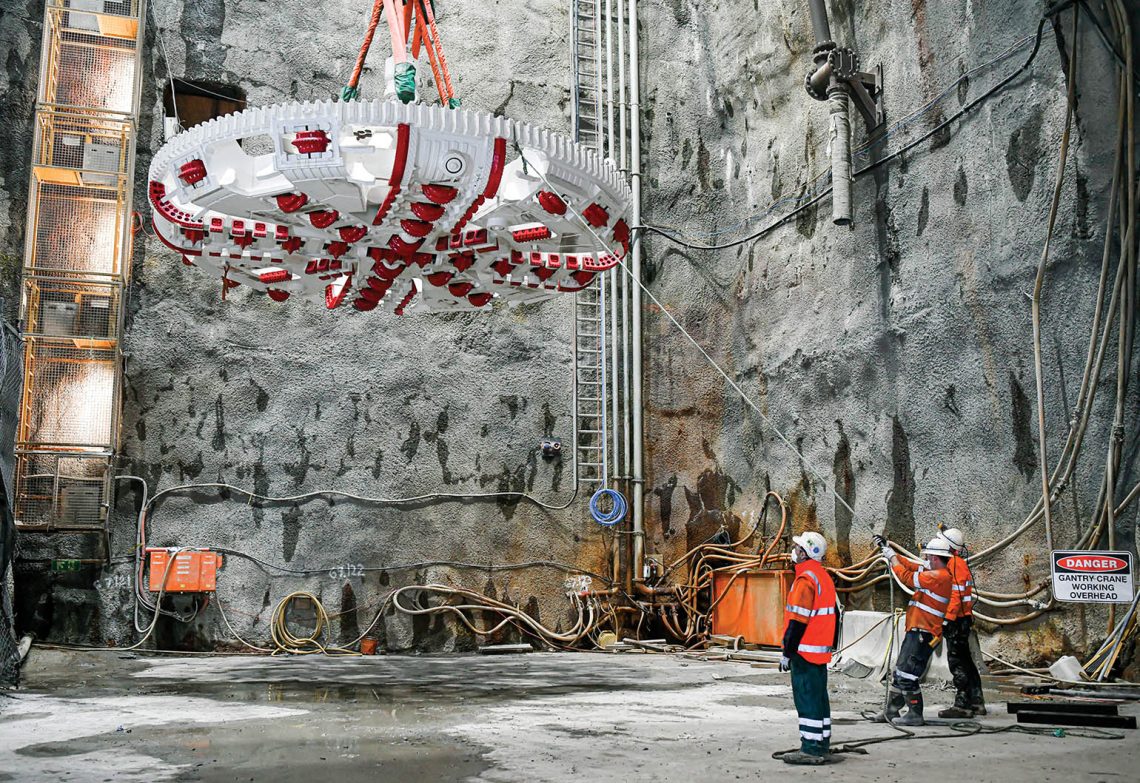The engineering masterpiece that won the 2022 Australian Construction Achievement Award required an almost unimaginable level of planning precision and engineering dexterity.
As reported in May, the 2022 Australian Construction Achievement Award (ACAA) was presented to John Holland, CPB Contractors and Ghella Joint Venture for the Sydney Metro City & Southwest Tunnel and Station Excavation (TSE) Works. The project kept Terry Sleiman and 11,000 other engineers and contractors busily burrowing under central and suburban Sydney for four years.
A standout feature was the infrastructure they had to avoid along the way.
“From an engineer’s perspective, this job — when you consider its complexity — was like threading the eye of a needle,” Sleiman, Executive Project Director at CPB Contractors, tells create.

“The structures we had to avoid — the foundations; the existing infrastructure; the Cross City Tunnel, the old sewer tunnels; Telstra infrastructure; Tank Stream; station boxes at Martin Place; the footing of the Macquarie Bank building, which was literally two-and-a-half metres from where we were tunnelling — that all made it a standout for me.
“It was incredible. When we first realised the complexity, we said, ‘You want to build what?’.”
The project includes a 15.5 km twin rail tunnel, dive structures and six complex underground stations between Chatswood and Sydenham, including the first rail tunnels under Sydney Harbour.
The project was delivered below some of the busiest parts of Sydney’s CBD, including Pitt Street and Martin Place.
The challenges of tunnelling under a city
There were two major challenges of the project.
One was the technical complexity of running tunnel boring machines (TBMs) for 15.5 km under heavily populated residential areas, a busy CBD and a world-famous harbour.
“When we were metres away from foundations of buildings and other tunnels, I was thankful that Sydney has good tunnelling ground,” Sleiman says.

“You’ve got predominantly great-quality Hawkesbury sandstone for the majority of the tunnel alignment.
“It’s just when you start to get close to existing infrastructure, for example the Cross City Tunnel, things become challenging. At the closest, we were eight metres away from the obvert of the Cross City Tunnel, so we were literally on top of it. We had to build monitoring instrumentation to go into that tunnel to monitor for any small movement.”
Engineers also had to design and build bridging slabs to ensure the ground above the Cross City Tunnel would not just ultimately handle train loading once the structure was complete but could also cope with the weight of the TBM — all 900 t of it, with a length of 140 m.
Beneath Martin Place, the team dug a station box just metres away from the granite-clad, heritage-listed Macquarie Bank building, which is more than 100 years old.
“We all know granite doesn’t take kindly to movement,” Sleiman says.
“And in the Macquarie Bank building, with its ornate ceilings… I don’t think we’ve even got the tradesmen to be able to recreate those ceilings should something have happened. It’s one of those lost arts. So yes, we had to be very careful.”
Of course, there was just as much concern about the surrounding modern, glazed buildings.
“They also don’t take kindly to movements in their foundations,” Sleiman says.
“When you’re boring below or next to a building in Sydney, through sandstone, what happens is a phenomenon known as stress relief.”
“When you take out a chunk of rock, the ground around it relaxes a little. It releases stress. That could move foundations to the tune of 40 or 50 mm. The last thing you want is the glazing to start falling off.”
How did the team overcome such a high-risk challenge?
The solution was found in constantly updated 3D digital modelling of the entire site, so project leaders were certain of what would happen before the work even began.
This was complemented with a sophisticated monitoring program.
Digital engineering on this project was vital, Sleiman says.
For example, the Victoria Cross cavern was one of the largest caverns in the Southern Hemisphere.
Much of the formwork produced by Italian specialists, to allow the intersections of caverns with pedestrian access points and more, was the first of its kind. It was designed first in a digital model to see how it might all fit together.
Not everything was imported, though. As the five TBMs cut through the rock, they also installed a tunnel lining made up of pre-cast concrete segments.
Six segments, each 1.7 m in length, make up one ring, with the finished tunnel created as one ring after another was put in place. The almost 100,000 segments were all produced in the Sydney suburb of Marrickville in a bespoke facility set up for this project.
“We take great pride in the labour force that was mostly unskilled, and who we trained on-site,” Sleiman says.
“It creates new skills and career development in a sector that urgently needs talent.”

Community outreach
The other big challenge was onboarding the many communities that could be affected by the project.
The tunnels would run under numerous suburbs and business districts, including much of Sydney’s north shore and through to the central business district. Thousands of houses, buildings, families and businesses could be affected.
Sleiman’s team did all they could to minimise that impact.
“Doing the job in someone’s backyard without impacting them at all was a big positive for me,” he says.
“We undertook a significant condition survey program — in excess of 7000 properties. We took photos and provided these reports to property owners. This ensured everybody was happy that the reports were representative of the condition of properties. We explained that if any cracks prevailed because of the work, we would be here to fix them.”
After the work was done, the team conducted post-work condition surveys and once again offered those reports to residents and business owners.
“We had very few people come back to us and say they had any cracking,” Sleiman says. “Feedback said people really supported the project because we supported them.”
A case in point was the building of a deep shaft in Blues Point Reserve by Sydney Harbour.
“Surrounding residents weren’t particularly enamoured with the idea of the reserve becoming a construction site, and a large shed to control noise being put up that would block their prime harbour views for a period of time,” he says.
“But again, we got them on board early.
“We were honest about what we were going to build and why, the timeline, what noise they could expect, etc. So much so that for the final TBM breakthrough we put a big video screen up in that reserve. We got a coffee truck. We put some fliers around the neighbourhood. We had hundreds of people come down and enjoy watching our final TBM break through. That’s what happens when you’re honest, you’re upfront and you listen.”
It’s little wonder that Jon Davies, CEO of the Australian Constructors Association, was so impressed with the project.
“This year’s winner delivered several Australian firsts that would not have been possible without the one team culture established from the outset,” he says. “All finalists have demonstrated that our industry is at its best when it works together.”
Engineers Australia Chief Engineer Jane MacMaster says the achievement is an example of the incredible results that can be achieved on a project of this size and complexity.
“In particular, embedding digital models and analytical techniques supported the project to achieve its impressive outcomes,” she says.
“Truly inspiring.”
For more of the latest engineering news sign up to create’s weekly newsletter.



